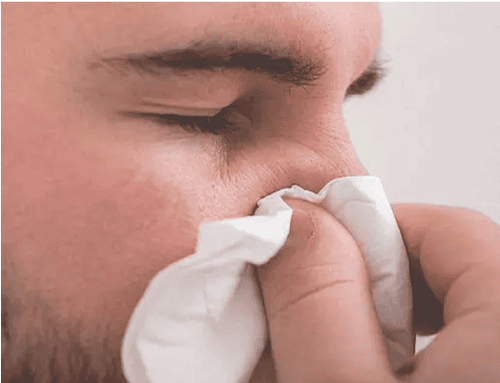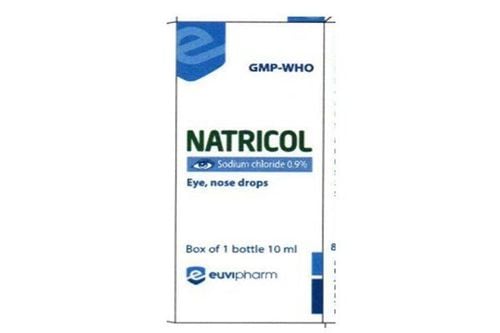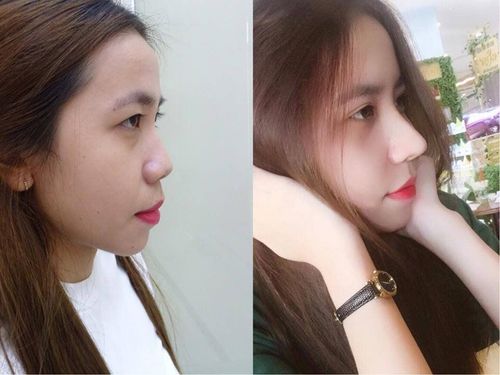This is an automatically translated article.
The article was consulted with Specialist Doctor II Nguyen Van Thai - Ear - Nose - Throat Doctor - Department of Otolaryngology and Head and Neck Surgery - Vinmec Danang International Hospital.Deviated nasal septum is a common abnormality in young children, usually appearing when the child is 6 years old (sometimes in children 2-3 years old). The disease is not dangerous but causes many uncomfortable symptoms for children such as nasal congestion, sinusitis that recurs many times.
1. What is a deviated nasal septum?
The nasal septum is a thin-walled anatomical structure made up of cartilage and bone fragments. The septum is located in the middle, separating the left and right nasal cavities. However, the nasal septum in most normal people is also not in the middle, but often has a deviated septum.Deviated nasal septum is a disease that occurs when the nasal septum is not in the normal position but is crooked or deviated to one side too much to cause many manifestations affecting the health and daily life of people. sick.
2. Causes of deviated nasal septum
Birth defects: In some cases, abnormal fetal development affects the position of the nasal septum. It is the disproportionate development of the cane septum, septal cartilage and ethmoid bone that causes deviated nasal septum, so the disease can appear soon after the baby is born. Injury during fetal development: In newborns, nasal trauma can occur due to excessive compression of the nasal area during pregnancy for any reason can also cause posterior nasal septum deviated. born. Trauma at birth: In the process of natural birth through the vagina with compression forces is also the cause of deviated septum Nose trauma: Deformed nasal septum due to trauma to the face or nose is the direct cause and the most common. In children and adults, accidents that can cause fracture - deviated septum include tripping, hitting someone hard, sometimes nose trauma occurs during sports, active games, slaves, etc. excessive joking or as a result of a traffic accident.
3. Classification of deviated nasal septum
A deviated nasal septum can have the following forms:Simple septal deformity (C-curvature) Complex septal deformity (S-curvature) Septal spine: Abnormal at one location on the septum, protrusion out like rose thorns. Crest of the septum: Abnormal protrusion throughout the length of the septum. Baffle foot thickness: Thickness in the lower part of the septum.
4. What are the signs of a deviated nasal septum?
Symptoms of a deviated septum are often nonspecific and are easily confused with other nasopharyngeal diseases. Common signs include:Nasal congestion : This is the most common symptom. When the septum is deviated at the first 2cm, this position is again the starting point of the nasal valve. Therefore, this abnormality affects the circulation of air when breathing and makes the patient's nose stuffy and difficult to breathe. Headache: Common in cases of deviated nasal septum in the upper part, often pain in the temples, apex, occipital region. Numbness and pain in the nose or on both sides of the nose. Nasal pyramidal deformity Runny or nosebleed. Sneeze. Reduced olfactory sensitivity. Snort

5. How to diagnose deviated nasal septum?
With suspicious signs of deviated nasal septum, the doctor will examine the nose area with a forehead lamp and a nose ball to directly observe the crooked position on the nasal septum.Diagnosis of deviated nasal septum by imaging tests:
Nasal endoscopy is a method to directly observe the entire nasal septum and help diagnose deviated septum pathology. Conventional X-ray: C-ray of the face can show crooked part of the septum of the bone, but not clearly showing the crooked cartilage. CT and MRI: The images show many useful details of the narrowest areas of the nose such as the roof of the nose or the olfactory slit. Rhinomanometry to measure the breathing pressure of each nasal cavity more specifically or can be recorded. Results for later follow-up. Nasal measurement with sound waves: Gives information about the cross-sectional area of the nose and its position, so that the location of the obstruction can be determined. In general, the diagnosis of a deviated septum can be accurate through clinical symptoms, nasogastric endoscopy, and CT or MRI.
6. Treatment of deviated nasal septum

Regular and prolonged topical vasoconstrictor treatment to relieve nasal congestion only makes the condition worse due to rhinitis due to drugs.
Surgical treatment Surgical treatment is a radical method to solve the crooked nasal septum. There are 2 surgical treatment methods including:
Submucosal septal clipping Orthopedic septum: Cottle developed this technique in the 50s of the 20th century. With the development of science and technology, today's surgeons have applied endoscopic surgery to correct the nasal septum. Septal correction surgery is performed when: The symptoms do not decrease with medication, the patient still has a lot of discomfort due to the deviated septum, or complications such as recurrent sinusitis occur. time. Correction of the septum is performed by surgery on the inside of the nose, making a small incision in the septum and removing the cartilage or bone that is crooked. After surgery, soft materials may be placed inside the nose to stabilize the septum until it heals temporarily. The advantage of orthopedic septum is relatively safe, with few complications. Complications of surgery for deviated septum include: Infection, bleeding, perforation of the septum or complete loss of smell due to nerve damage (no smell) Currently at Vinmec International Hospital, The problem of deviated nasal septum is solved by the method of endoscopic rhinoplasty of the nasal septum. Surgery is indicated for all patients with deformed septum causing obstruction of nasal ventilation, obstructing nasal sinus drainage, deviated septum causing irritation to headache, and obstructing the passage of nasal passages. endoscopic sinus surgery and abnormal cases causing sinusitis.
Please dial HOTLINE for more information or register for an appointment HERE. Download MyVinmec app to make appointments faster and to manage your bookings easily.














